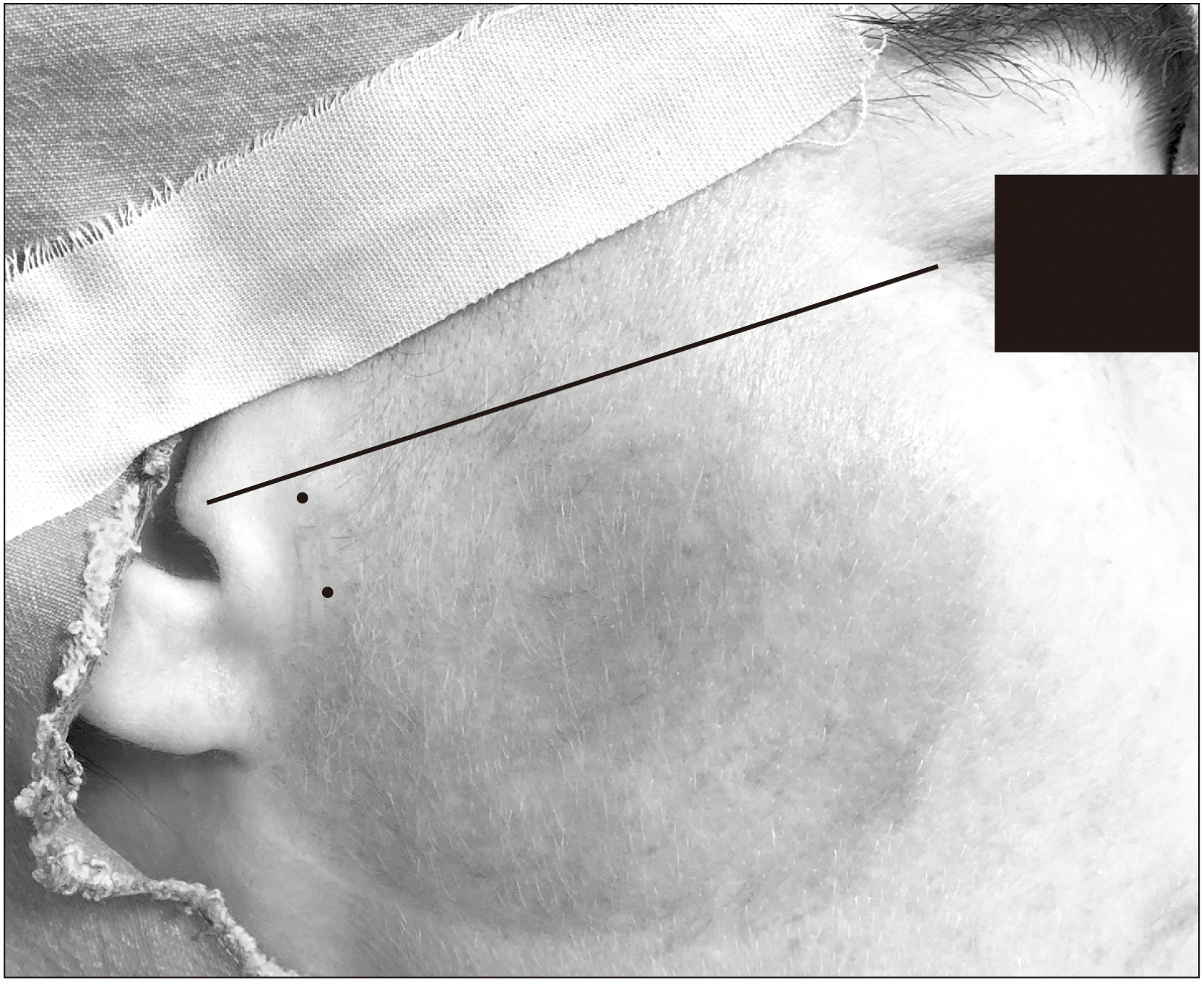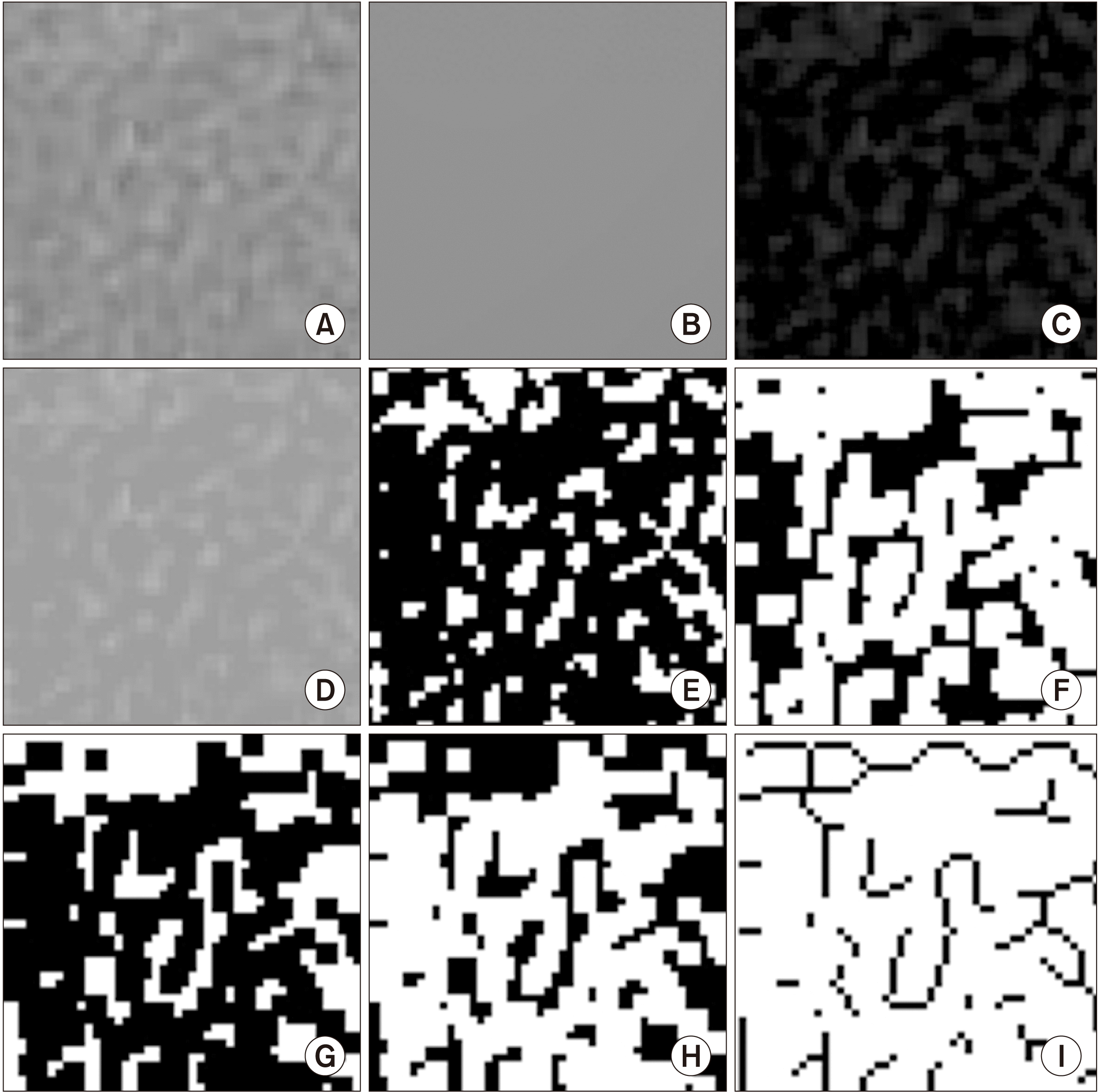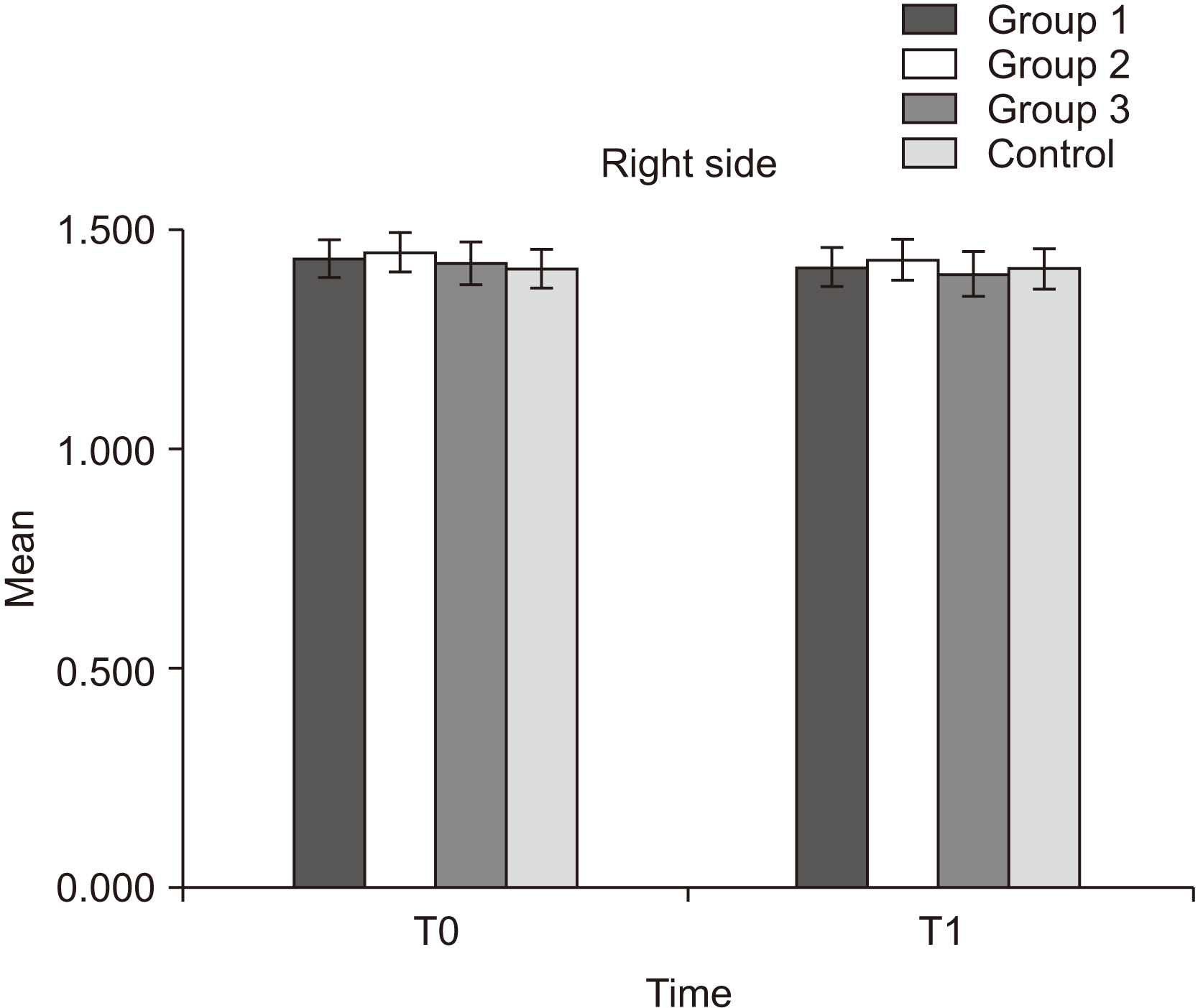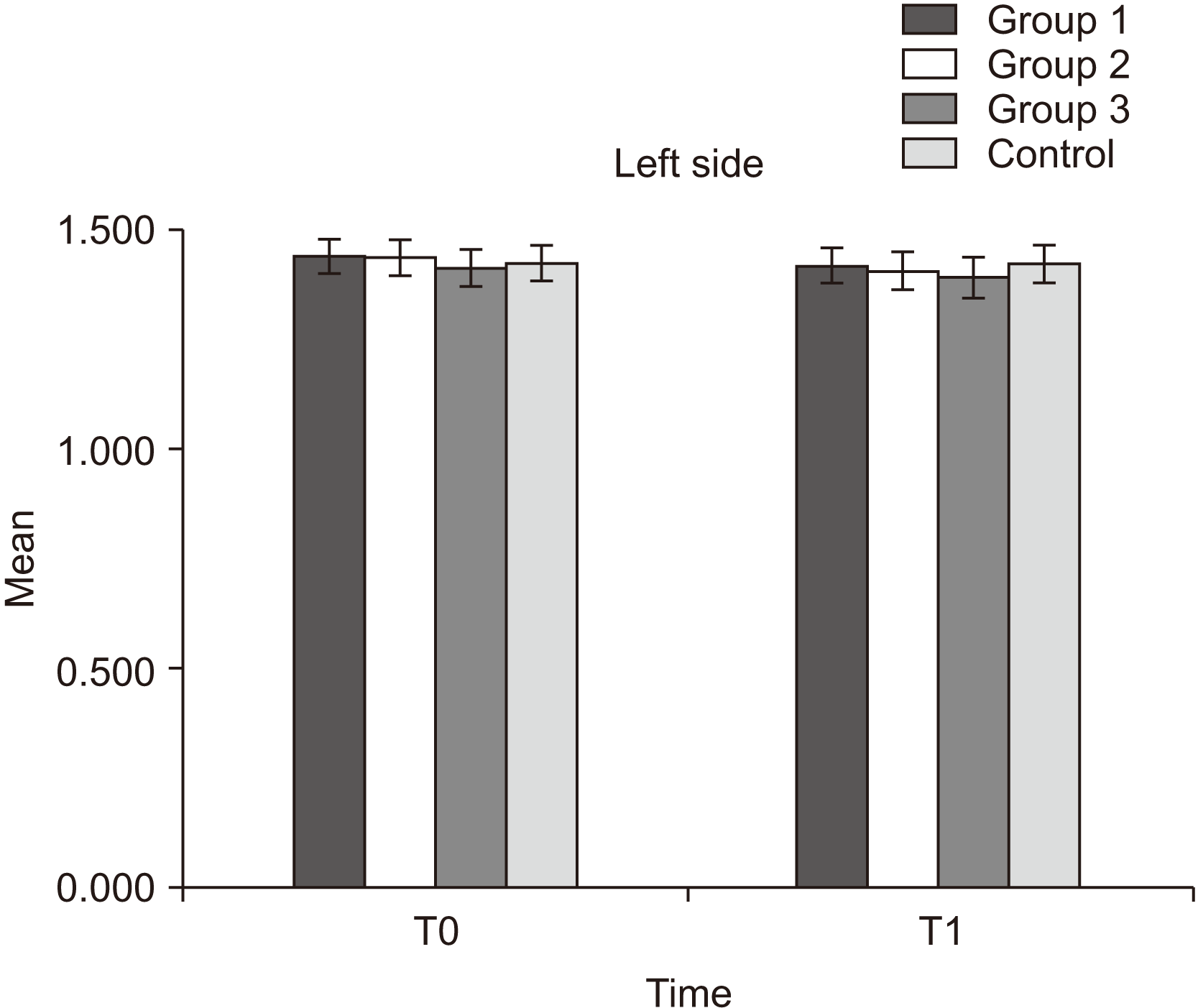I. Introduction
II. Materials and Methods
1. Patients
2. Prolotherapy procedure
3. Radiography
4. Fractal analysis
 | Fig. 2Fractal dimension analysis process. A. Region of interest. B. Blurred image of the cropped and duplicated region of interest. C. Subtracted blurred image from the original image. D. Addition of a grey value of 128 to each pixel location. E. Binarization. F. Erosion. G. Dilatation. H. Inversion. I. Skeletonization. |
5. Statistical analysis
III. Results
Table 1
(SD: standard deviation, T0: before treatment, T1: six months after treatment, RCFD T0: fractal dimension value of right condyle at time T0, RCFD T1: fractal dimension value of right condyle at time T1, LCFD T0: fractal dimension value of left condyle at time T0, LCFD T1: fractal dimension value of left condyle at time T1)
Table 3
Table 4
| Group | Mean | SE | P-value | |
|---|---|---|---|---|
| Group 1 | RCFD T0–RCFD T1 | 0.019235 | 0.005102 | 0.002* |
| LCFD T0–LCFD T1 | 0.021882 | 0.004013 | 0.000* | |
| Group 2 | RCFD T0–RCFD T1 | 0.018267 | 0.005321 | 0.004* |
| LCFD T0–LCFD T1 | 0.029333 | 0.006657 | 0.001* | |
| Group 3 | RCFD T0–RCFD T1 | 0.023769 | 0.006634 | 0.004* |
| LCFD T0–LCFD T1 | 0.021385 | 0.004474 | 0.000* | |
| Control | RCFD T0–RCFD T1 | 0.000467 | 0.001316 | 0.728 |
| LCFD T0–LCFD T1 | –0.000267 | 0.001449 | 0.857 | |
(SE: standard error, T0: before treatment, T1: six months after treatment, RCFD T0: fractal dimension value of right condyle at time T0, RCFD T1: fractal dimension value of right condyle at time T1, LCFD T0: fractal dimension value of left condyle at time T0, LCFD T1: fractal dimension value of left condyle at time T1)




 PDF
PDF Citation
Citation Print
Print







 XML Download
XML Download